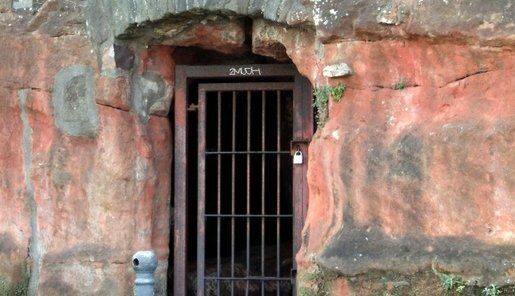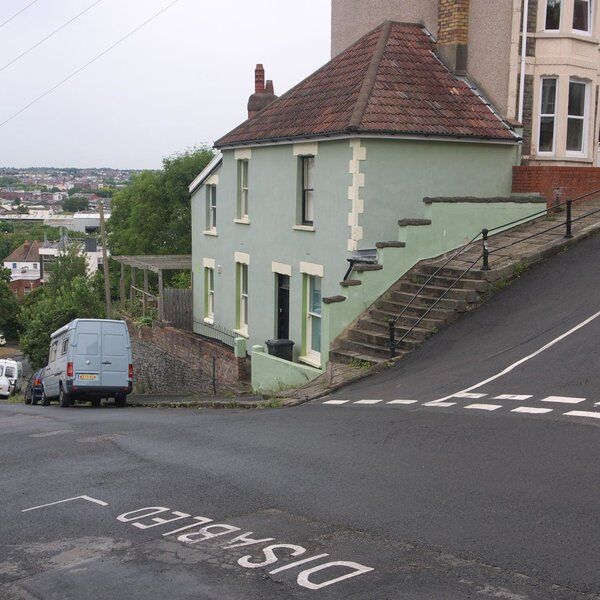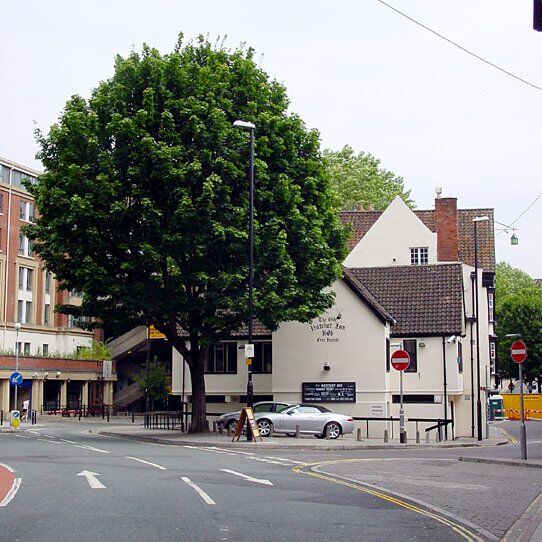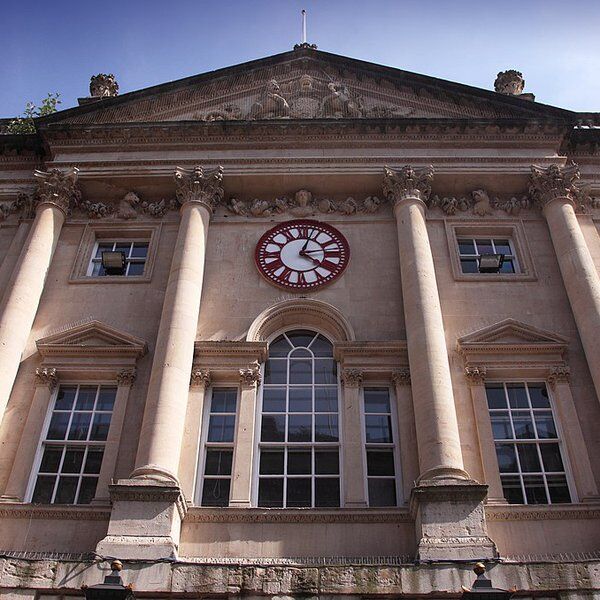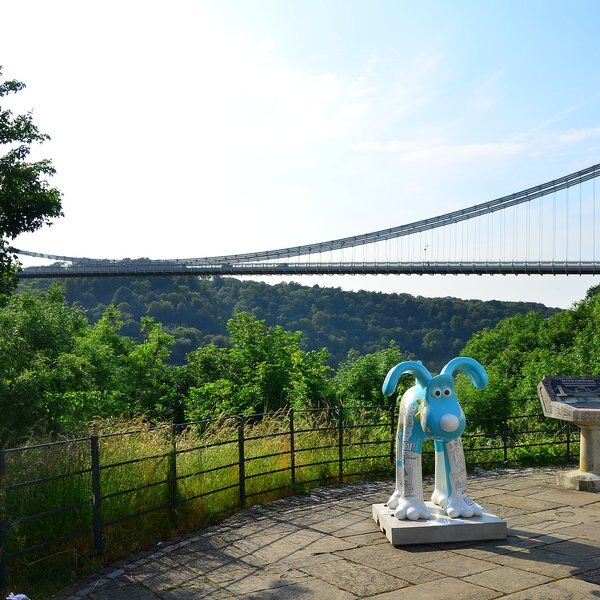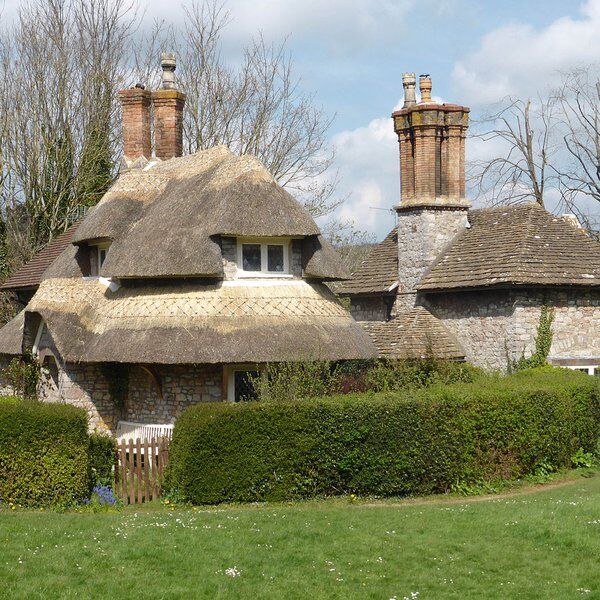Stretching from behind Phoenix and Redcliffe Wharf, in Bristol, is a labyrinthine network of caves and tunnels. This is not a natural cave system, however. Tangling for over a 1 acre (or more!) beneath roads and buildings, the Redcliffe Caves have a surprisingly mundane explanation for something so strange. Don’t let that distract you, however! Just like the caves themselves, there are plenty of curious twists and turns to this tale!
The Middle Ages
The Caves are mostly made up of Triassic red sandstone. It was this that gave rise to the area’s name: Redcliffe.
Its usefulness was first realised in the Middle Ages when glass and pottery making started in earnest. The sandstone cliffs were used as a convenient source of sand, a primary ingredient in these processes.
Come the 14th century, excavation had already been extensive enough to permit rudimentary dwellings in the caves. The first to take advantage of this were hermits who began using them in 1346, and would continue to do so for the next three centuries. The first recorded was a man called John Sparks.
The life of a hermit was only for those who sought proximity to God but felt a monastery or nunnery did not go far enough. They would seek an ascetic lifestyle, often on behalf of a benefactor for whose soul they would pray for in return for essentials such as food and protection. John’s benefactor was Thomas of Berkeley, an English peer and Admiral whose fraught history and lineage was connected to the nearby Berkeley Castle.
Evidence for this use of the Caves can be found in the Hermit’s Cave, which is situated within the Quaker’s Burial Ground near St Mary Redcliffe Church. A plaque explaining their history and that of John Sparks specifically can be found nearby.
17th to 19th Centuries.
The last hermits were said to have lived in the caves in the 17th century. Around this time, glass production really took off and it’s believed that this is when the majority of excavation was performed.
As the caves expanded, many buildings became connected by the tunnels. The full extent of the tunnels has not been mapped for reasons we’ll cover soon, but evidence suggests they could stretch as far as the current Bristol General Hospital site. Other locations in the immediate area, such as the still-operational Ostrich Pub, offer the chance to see Cave exit and entry points as they might have been at the time.
19th Century to modern day
Come the 19th century and excavation had slowed, due to a decline in glass production. Political and technological changes lead to Redcliffe Caves being repurposed as a place for storage – goods, waste and even people were kept there.
During the French Revolutionary Wars (1792 – 1802) and Napoleonic Wars (1803 – 1815), prisoners of war were held in the caves. Bristol has a rich naval history and the caves offered, if not hospitable options for housing prisoners, then functional ones.
As well as serving as a rudimentary jail, Redcliffe Caves were also used as a dumping ground for waste produced whilst making lead shot. Lead shot would have been used as ammunition and ship ballast, an important part of Bristol’s booming ship manufacturing industry. Manufacturers simply poured their waste products down into the cave complex making large sections completely inaccessible.
In World War II, Bristol was devastated by air raids.
The worst raid to hit Redcliffe was the Good Friday Raid (11 April 1941)- 153 German planes dropped 193 tons of high explosives and 36,888 incendiaries; five bombers were shot down and 180 people killed. One of the bombs fell in the playground of St. Marry Redcliffe School [resulting in a bomb crater] directly above the caves.
The Cave’s viability as an air-raid shelter was considered. However, after bombing resulted in a crater large enough to have exposed parts of the system this was not pursued on a large scale. Despite this, evidence and local anecdotes reveal that a small cave off Redcliffe Parade was indeed used as a shelter until 1942, outfitted with beds and heaters for 20 - 30 people. After major air raids stopped, however, this was wound down.
The crater resulting from the bomb was filled in, resulting in further sections of the Caves being closed off and lost.
Present Day
Due to the various uses and misuses of Redcliffe Caves over the centuries, it is difficult for anyone to know exactly how far they stretch or what secrets lie within. Estimates suggest they cover an area of 1 acre, with some sources claiming it could be up to 12 acres. An attempt at mapping was made in the 1950s which showed quite how extensive the excavation had been, but it’s likely that this was unable to capture the system at its ‘prime’.
Unfortunately the caves are not freely open or accessible to members of the public. They have been used as a venue for small music, art, literary, and cinematic events, with some areas having been used for filming. Various cave exits can be found around the area if you know where to look, but otherwise don’t expect to indulge an itch for spelunking any time soon. Leave that to the Axbridge Caving Group who have been diligently digging their way through cave infill, discovering forgotten passages and forgotten equipment left behind by the Redcliffe Cave's former users.
Interested in finding more places like this? Try one of our Bristol Treasure Hunts - untangle cryptic clues as a team, as you are taken on a journey to the most unique, unusual and bizarre corners of England.
